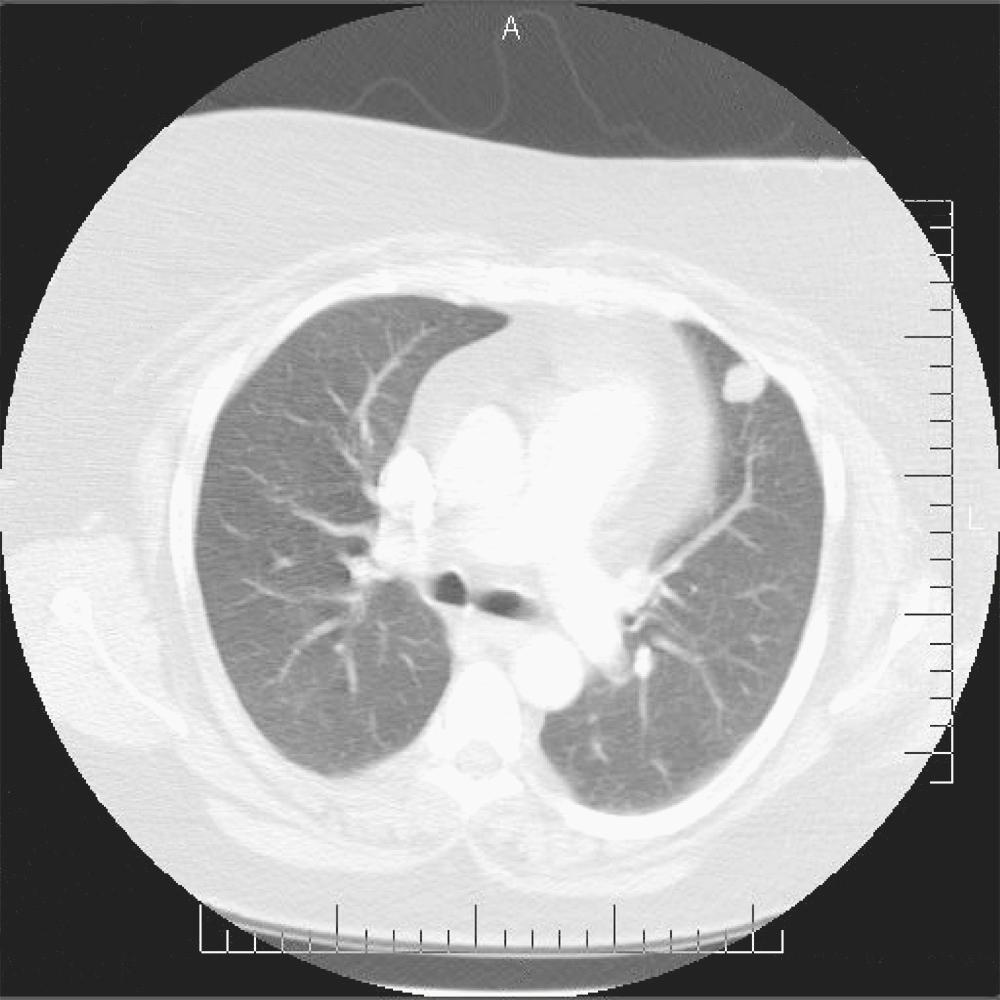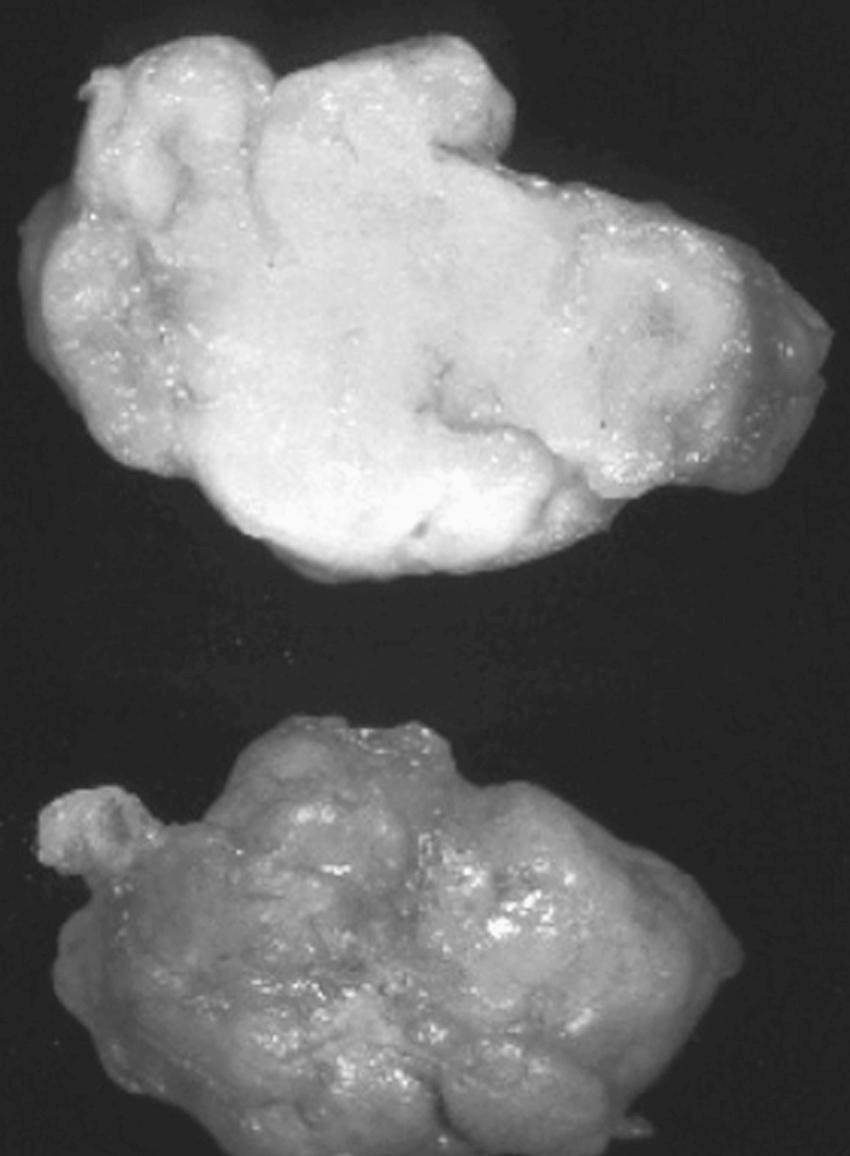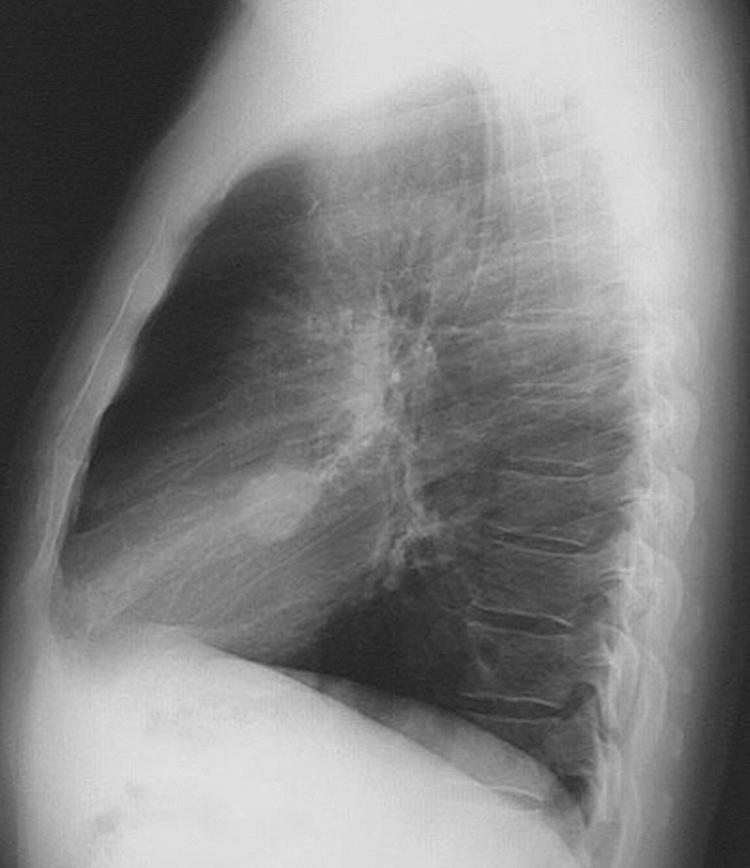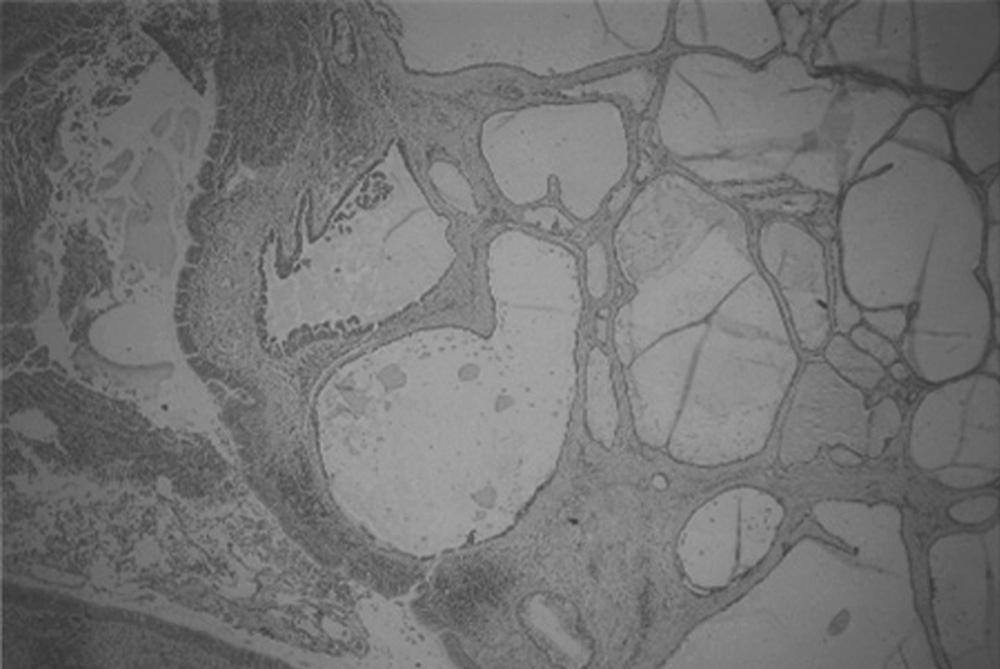Physical Address
304 North Cardinal St.
Dorchester Center, MA 02124
Benign lesions of the lung are rare. A benign lung nodule is difficult to define and classify because some lesions that are called benign have malignant properties. However, the best definition of a benign lesion is one in the pulmonary parenchyma that does not metastasize and does not penetrate through surrounding tissue planes. When it is completely resected, a benign tumor should not recur.
Benign lung tumors can be classified pathologically, but a clinically useful classification would combine location (i.e., endobronchial or parenchymal) and information about whether the lesions are single or multiple. Benign lung tumors can also be classified by their presumed origin. Those classifications include unknown (hamartoma, clear cell, teratoma), epithelial (papilloma, polyps), mesodermal (fibroma, lipoma, leiomyoma, chondroma, granular cell tumor, sclerosing hemangioma), and other (myofibroblastic tumor, xanthoma, amyloid, mucosa-associated lymphoid tumor).
The controversy arises because some tumors are often labeled benign, such as pulmonary blastomas, but have the potential to exhibit malignant properties, and thus clear-cut boundaries between malignant and benign often are blurred. Benign tumors of the lung can arise from all of the various cell types that are present in the lung. Box 10-1 lists the most common benign tumors based on their cells of origin.
Mucous gland adenoma
Clara cell adenoma
Mucous cystadenoma
Pleomorphic adenoma
Hamartoma
Inflammatory pseudotumor
Chondroma
Fibroma
Benign endobronchial fibrous histiocytoma
Leiomyoma
Lipoma
Lymphatic lesions
Nodular pulmonary amyloidosis
Clear cell tumor (sugar tumor)
Thymoma
Granular cell tumor
Teratoma
Pulmonary paraganglioma
Most times, benign nodules are resected because of the inability to differentiate them from a malignant process. For this reason, a benign lesion is identified after resection. The typical evaluation of a patient with an indeterminate pulmonary nodule is described next.
The single most important test for a patient who arrives at the office with an indeterminate pulmonary nodule is the review of old chest radiographs and computed tomographic (CT) scans. The radiograph should be interpreted in the context of the patient's medical history. Important factors include a history of a previous solid organ cancer and history of smoking. The physical examination is typically unremarkable, without any cervical lymphadenopathy. If the nodule is new or if the patient did not have a previous chest radiograph, chest computed tomography with contrast enhancement and possibly integrated positron emission tomography–computed tomography (PET/CT) are performed. If the nodule lacks calcification on the chest CT scan, it is indeterminate.
Positron emission tomography (PET) and integrated PET/CT scanning have recently become important adjuncts in the armamentarium of general thoracic surgeons. PET/CT has helped physicians investigate an indeterminate pulmonary nodule that is larger than 8 mm (smaller nodules that are malignant can be missed by PET/CT). If the nodule has glucose avidity and a maximum standard unit value (maxSUV) of 2.5 or greater, it has a significant chance (>90% in our series) of being malignant. In a study by Bryant and Cerfolio of 585 patients, 496 patients had a malignant nodule, and their median maxSUV was 8.5. Eighty-nine patients had a benign nodule, and the median maxSUV was 4.9 ( P < 0.001). They observed that if the maxSUV was between 0 and 2.5, the chance that the nodule was malignant was 24%; between 2.6 and 4.0, it was 80%; and for 4.1 or greater, it was 96%. False-negative results occurred from bronchoalveolar carcinoma in 11 patients, carcinoid in 4 patients, and renal cell in 2 patients. False-positives included fungal infections in 16 patients. Similarly, enlarged mediastinal lymph nodes with a maxSUV of greater than 2.5 are likely to be malignant; we have shown that a lymph node with a maxSUV of 5.3 or greater has a 92% chance of being malignant. Patients with lymphadenopathy on CT scans or uptake on PET/CT scans should have mediastinoscopy, endoscopic ultrasound fine-needle aspiration, or endoscopic bronchial ultrasound examination to obtain tissue diagnosis before a surgical resection. If the CT and PET scan results are equivocal or abnormal, resection is usually best in patients who are good candidates for surgery.
Needle biopsy, by either a transthoracic route or a transbronchial route, rarely changes the management of this type of nodule, especially if there is no lymphadenopathy. Definitive diagnosis is really achieved only with excisional biopsy, which can be performed by a video-assisted approach, an open technique, or by robotic assisted thoracoscopy, depending on many variables that are discussed elsewhere in this text. Navigational bronchoscopy can be a helpful adjunct in the workup of these lesions, especially if the lesion is small and deep in the tissue. It allows the surgeon to biopsy the nodule (which may or may not change the need for resection) and to mark deeper lesions that are not palpable during minimally invasive surgery. In addition, biomarker panels may one day be helpful in determining whether solitary pulmonary nodules represent cancer, as opposed to a benign lesion.
In this chapter, we discuss the most common benign tumors of the lung (adenomas and hamartomas constitute the largest group of benign lung tumors) and highlight the important clinical factors associated with each one. Each section is organized in the following fashion to help the reader: definition, incidence, special history or physical examination findings, unique radiologic characteristics, intraoperative tips for resection if indicated, pathologic characteristics, and special postoperative care or follow-up care, including the risk of recurrence. Box 10-2 lists the radiographic characteristics typical of benign lesions.
Nodular lesions with “tails” toward the hilum include rounded atelectasis (usually has thickening of the associated pleura as well), arteriovenous malformations, and occasional bronchogenic cysts.
Lesions that are connected to blood vessels include nodular pulmonary infarcts, occasional solitary metastatic lesions, arteriovenous malformations, and bronchopulmonary sequestrations.
Multiple peripheral triangular or rounded lesions with cavitation and with pulmonary artery branches leading up to them suggest septic embolization.
In cavitating nodules, wall thickness provides diagnostic information. Thin-walled (<1 mm) cavities are uniformly benign, and 90% of cavitated nodules with wall thickness of 1 to 4 mm are benign. In contrast, cavitated nodules with a wall thickness greater than 16 mm are nearly always malignant.
Nodules surrounded by a halo may be noted in the setting of angioinvasive aspergillosis, zygomycosis (mucormycosis), lymphoma, bronchioloalveolar carcinoma, coccidioidomycosis, and (rarely) bacterial infections.
Nodules composed predominantly of ground-glass opacification (nonsolid nodules) can be seen in bronchioloalveolar carcinoma.
Eighty percent of nodules smaller than 2 cm are benign; 90% of those larger than 3 cm are malignant, yet 40% of malignant nodules are smaller than 2 cm.
Nodules surrounded by small satellite lesions are benign 90% of the time.
Nodules with a doubling time of less than 30 days or greater than 480 days are usually benign. Bronchioloalveolar carcinoma is an exception to this rule and may have a radiographic doubling time of more than 700 days. Epstein-Barr virus–associated lymphoma or lung cancer in HIV-positive patients can have fast doubling times.
Hamartomas are the most common benign lung lesions and account for more than 70% of all nonmalignant tumors of the lung. They are mesenchymal tumors with a peak incidence in the sixth decade of life, and approximately 90% are asymptomatic. Men are affected twice as often as women are. Ninety percent of these tumors appear as solitary peripheral nodules and account for approximately 4% of all solitary pulmonary nodules ( Fig. 10-1 ). The 8% to 10% of hamartomas with presenting symptoms such as cough, hemoptysis, and recurrent pulmonary infections are usually endobronchial lesions. Resection of these lesions is usually needed, even when a definitive biopsy has been performed on them and they are proved to be benign because they cause local problems from airway obstruction. These problems include recurrent pneumonia, parapneumonic empyema, hemoptysis, and cough. Laser ablation can be used to help open the airway, but complete resection is preferred.

Cartilage is present in most lesions and is diagnostic of a hamartoma. There are usually nests of cartilage surrounded by cellular fibrotic tissue. Mature fat cells are a frequent component, and their presence on CT scan (low Hounsfield units) is strong evidence for the diagnosis of a hamartoma. Rarely, bone, vessels, bronchioles, and smooth muscle are found. On gross examination, the bosselated appearance is typical for a hamartoma. The usual size is 1 to 3 cm, with the lesion being round and firm. They are easily shelled out from the surrounding lung tissue ( Fig. 10-2 ). As with any indeterminate pulmonary nodule, lung-preserving techniques are best if possible.

On radiographic examination ( Fig. 10-3 ), hamartomas are peripheral lesions that are most often located in the lower lung fields and are well circumscribed. The majority are less than 4 cm in diameter, and calcifications can be appreciated on radiographs in 10% to 30% of cases ( Fig. 10-4 ). Calcifications are described as being “popcorn-like” or “diffuse.” Hamartomas display a slow growth rate (≈3 mm/yr) and are rarely multiple. Although it is identifiable in only half of the cases, fat density as identified with CT scan (low Hounsfield units) is strongly suggestive of a benign hamartoma. Endobronchial lesions are not identifiable with radiographic examination unless distal parenchymal changes have occurred (e.g., pneumonia or atelectasis).


Although percutaneous transthoracic needle aspiration yields a definitive diagnosis in up to 85% of cases, only a positive and specific result negates the need for excisional biopsy. Depending on the location, lesions might be amenable to resection by video-assisted thoracoscopic surgery (VATS). For hilar or central tumors that would necessitate a greater resection, such as pneumonectomy, endobronchial ultrasound guided fine-needle aspiration may be helpful in establishing a benign diagnosis of hamartoma and avoiding resection. Unlike cartilaginous tissue in normal bronchi, the cartilage in hamartomas tends to show irregular size, shape, and arrangement of chrondrocytes and prominent empty lacunae. Given the potential for malignant transformation, continued observation of these lesions is warranted. Endobronchial lesions obstructing the airway may be amenable to bronchoscopic resection with either a snare or neodymium-yttrium-aluminum garnet laser resection, although long-term follow-up data on recurrence risk are not available. Historically, most of these patients have undergone sleeve resection.
Carney triad is found infrequently and consists of a gastric epithelioid leiomyosarcoma, a functioning extra-adrenal paraganglioma, and a pulmonary hamartoma. Most commonly, the gastric lesion is the first lesion identified, followed by the extra-adrenal paraganglioma.
Although hamartomas are benign per se, several cases of malignant transformation arising at the resection site have been reported. However, it appears that these synchronous or metachronous carcinomas are coincidental because the frequency is less than 7%. The etiology of these malignant neoplasms and their relationship to the hamartoma remain unknown.
Mucous gland adenoma is a rare, benign tumor arising from the mucous glands of the bronchus; it is also known as bronchial cystadenoma and mucous cell adenoma . The exact incidence of these tumors is unknown, although several small series of case reports have been published. To be classified as a mucous gland adenoma, a tumor must contain cystic glands that are superficial to the cartilaginous plate, be in the bronchus, and contain features of normal bronchial seromucous glands. On histologic examination, numerous small mucus-filled cysts lined by well-differentiated epithelium are observed ( Fig. 10-5 ).

These benign lesions are typically exophytic in nature and cause bronchial obstruction; therefore, they usually appear because of hemoptysis, recurrent pneumonia, and persistent cough. Because of their nonspecific symptomatology, mucous gland adenomas may go undiagnosed for a prolonged period of time. The lesion itself does not have distinguishing radiographic features, but the chest radiograph may show obstructive pneumonitis. CT scan may demonstrate an intraluminal mass, while bronchoscopy reveals a firm, smooth, shiny, and well-defined mass that may be pedunculated. These noninvasive tumors are evenly distributed between the left and right lungs, with the major bronchi of the lower lobes being affected more often. The lesions are soft, spherical, and polypoid with an average diameter of 18 mm; however, lesions greater than 6 cm in size have been reported. Although the lesions rarely have a stalk, stalks can be completely removed endoscopically by curettage, cryotherapy, or laser ablation. Surgical resection is indicated only if the distal lung tissue is destroyed or chronically infected.
Become a Clinical Tree membership for Full access and enjoy Unlimited articles
If you are a member. Log in here